Look at me – I’m talking to you
|
I sleep in an incubator or a warm cot which keeps me warm, just like a womb would |
Your premature baby may look so small and helpless, but in reality, your baby can already tell you many things. By listening to and actively participating in the interaction with your baby, you can help and give them security and love. Babies are different and use different ways and signs to tell how they feel. This material is written from the baby’s perspective.
The purpose of this booklet is to help you understand your baby's behaviour by looking at their body language and reactions. By getting to know your baby and understanding their needs, you can support your baby's growth and development. This will also help you feel better prepared to come home with your baby.
Right now, your baby needs the specialised care that neonatal doctors and nurses are trained to provide. The doctors and nurses at Neonatal Unit 12 + 13 will help you understand and communicate with your baby, however you will quickly become the person who understands your baby best.
This booklet doesn't explain everything about premature babies, nor does it answer all your questions. But it can help you see and understand your baby 's behaviour right from the start.
-
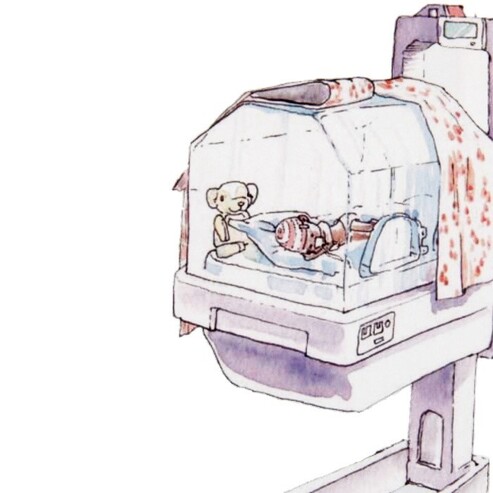
I sleep in an incubator or a warm cot which keeps me warm, just like a womb would
Your premature baby may look so small and helpless, but in reality, your baby can already tell you many things. By listening to and actively participating in the interaction with your baby, you can help and give them security and love. Babies are different and use different ways and signs to tell how they feel. This material is written from the baby’s perspective.
The purpose of this booklet is to help you understand your baby's behaviour by looking at their body language and reactions. By getting to know your baby and understanding their needs, you can support your baby's growth and development. This will also help you feel better prepared to come home with your baby.
Right now, your baby needs the specialised care that neonatal doctors and nurses are trained to provide. The doctors and nurses at Neonatal Unit 12 + 13 will help you understand and communicate with your baby, however you will quickly become the person who understands your baby best.
This booklet doesn't explain everything about premature babies, nor does it answer all your questions. But it can help you see and understand your baby 's behaviour right from the start.
-
Around me there is a lot of technical equipment that you should know about. When you know a little bit about it, it can help you feel calmer and more secure in the first days you are with me. This equipment supports me for as long as I need it. I may need to have help breathing, this can be by having air blown through small plastic tubes in my nostrils (nasal CPAP) or by getting a supplement of oxygen through small plastic tubes in my nose. Sometimes I can have a long thin tube (tracheal tube) that reaches down into my windpipe through my nose or mouth. The tube is connected to a ventilator, which helps me to breathe.
The plastic tube that goes through one of my nostrils is called a nasogastric tube. It goes down into my stomach so that you can give me food through it. The tube is attached to my cheeks with tape.
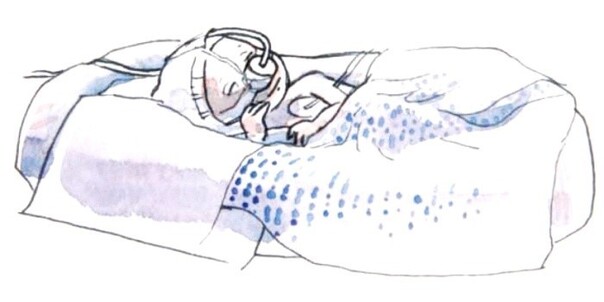
The equipment around me supports me for as long as I need it
-
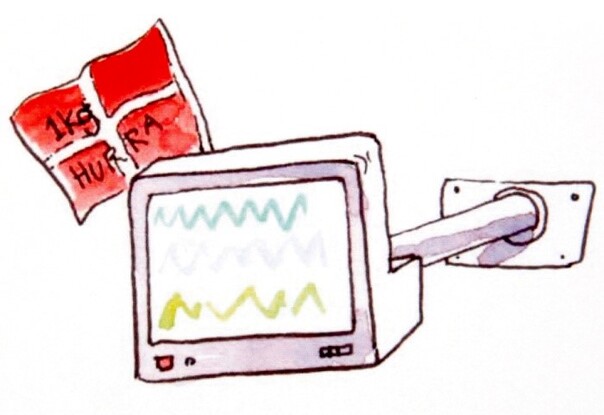
On the wall hangs a monitor – it looks like a television. On the screen, the nurse can read my heart rate (pulse), my breathing (respiration) and how much oxygen is in my blood (saturation).
The monitor connects to the electrodes on my chest and to the probe wrapped around my foot or hand. The electrodes on the chest are stuck to the skin. They can fall off easily, but this ok, as they can easily be stuck back on.
The probe around my hand or foot measures with a red light how much oxygen I have in my blood. It is very sensitive to movement, so when alarms rings, it is not always because there is a problem.
Sometimes I have a plastic cuff on my arm to measure my blood pressure.
In my navel, hand or foot, a small tube can be inserted into a vein if necessary. Through this I can get medicine and fluids. The fluid flows directly into the bloodstream via a pump that regulates the speed and volume.
-
If you see me lying like this, you know I'm comfortable.
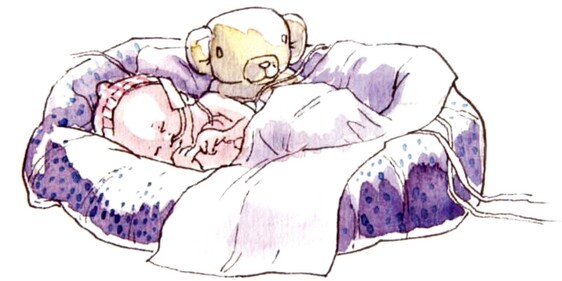
I lie curled up with my arms and legs tucked in close to my body.
I keep my hands close to my face or mouth. Sometimes I even suck on my fingers.
I'm holding onto something with my hand: a scented cloth, a lead, or your finger.
I have a relaxed expression on my face.
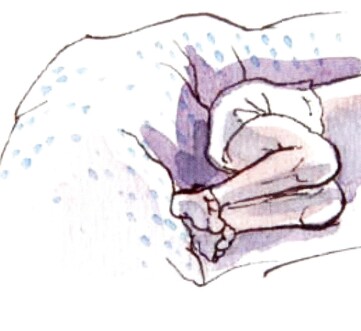
I rest my feet against each other.
I have support underneath my feet.
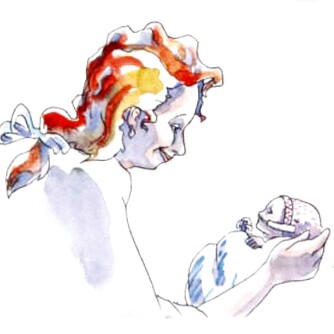
I can look you in the eye, even if it's just for a moment.
-
If you see me lying like that, you know I'm having a hard time.
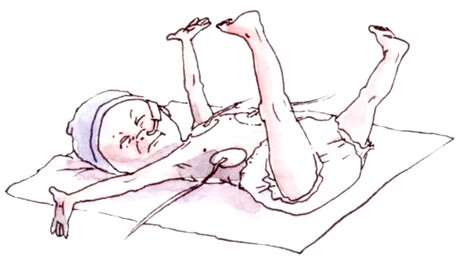
I spread my fingers and toes.
I frown or squint.
I bend over.
I stretch out my arms and legs stiffly in the air.
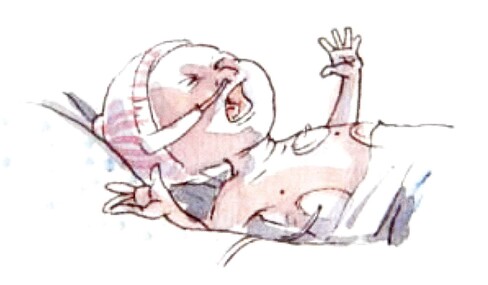
I whine or cry.
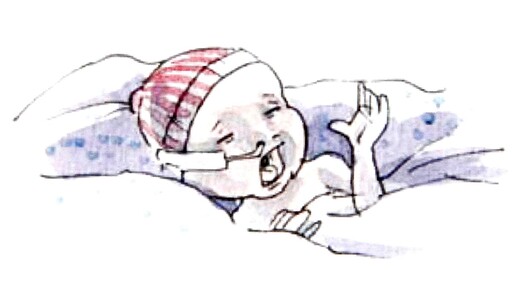
I yawn or hiccup several times in a row while I'm being changed or while looking at you.
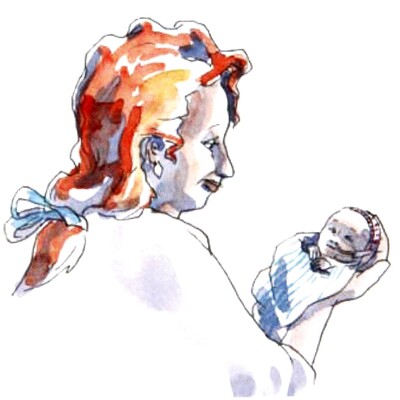
If I look away from you, it's because I'm tired and have had enough contact for now.
-
I am vulnerable and not quite ready to live in your surroundings. I quickly become overwhelmed if I am exposed to many stimuli at the same time: noise, light, changes of position, and sometimes painful treatments or examinations. I still need to learn how to cope with all these new experiences.
Noise can bother me...
- Doors that open and close, especially the latches into my incubator.
- The sound of things being put on top of my incubator.
- Loud conversations.
- Alarms that are loud or that ring for too long.
- The sound of running water from the tap.
You can help me by...
- In consultation with the nurse, taking me out of the incubator and lying with me skin-to-skin.
- Speaking in a quiet voice in my living room.
- Making sure the alarm sound is low.
- Reducing the activity level around my incubator.
- Minimising the number of people in my bed space.
This is especially important while I am very small and vulnerable. As I grow, I can handle more and more.
Light can bother me...
- Especially while I'm very small and vulnerable
- This applies to both daylight and artificial lighting.
You can help me by...
- Dimming the lights and create a cozy atmosphere in the room (curtains half drawn, appropriate lighting)
- Covering my incubator with a blanket when I need to be in the dark. However, remember to keep a section up or open so you can see into my incubator without disturbing me.
- Cover my eyes with a small cloth when very bright light is needed.
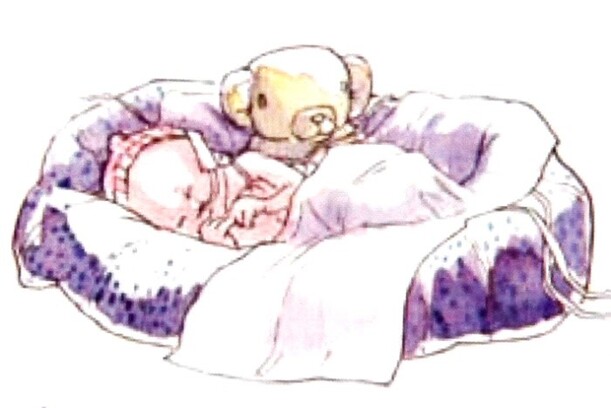
I like to lie down comfortably...
- It is important for me to maintain my natural curled up position
If I lie alone in the middle of my incubator with no boundaries, I feel lost. I prefer to lie skin-to-skin. You can help me by...
- As soon as it is possible, lying me on my side with my back curved, so I can easily get my hands up to my face and my feet together.
- Over time, when I'm ready, helping me learn to sleep on my back, as that's the position I'm going to sleep in when I get home.
- Enclosing me within a nest made of rolled towels or wraps that are high enough for me to rest my feet against it. The nest should give me firm support so that I can feel a boundary around my body. The bigger I get, the less I will need the nest.
- Lying skin-to-skin.
I need to sleep...
- Sleep is of the utmost importance to me.
- Periods of deep sleep allow me to recover from stimulation and treatment.
You can help me by...
- Carefully respecting my sleep, even if you may find it frustrating that you can't talk to me when you're with me. This also applies to the staff.
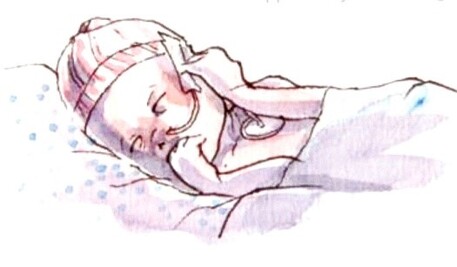
I like your scent...
- Whether it's mum or dad, your smell is very soothing to me.
You can help me by...
- To put a handkerchief, a cloth or a muslin cloth with your scent near my face, so that I have the feeling that you are always close to me. I can either hold it in my hand or maybe be partially covered by it.
- Keeping me close, lying skin-to-skin as much as possible.
-
The staff will show you how you can support me in terms of treatment and care. Over time, you will learn to take care of me yourself – to wash me and to change my nappy.
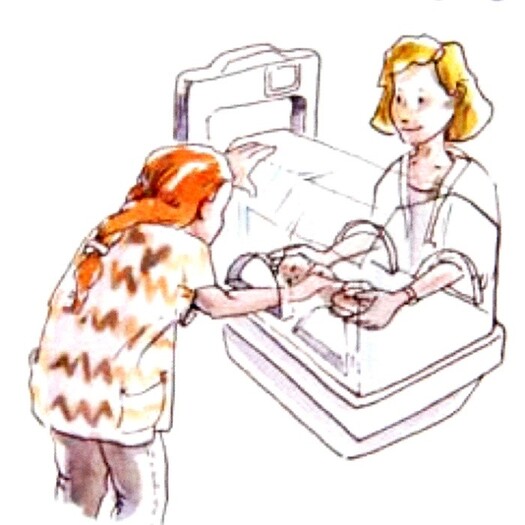
I like to know what's going on
Try to wake me up gently before you do anything with me. Start by placing your hands on my body and speak softly to me. Tell me what's going to happen and who's going to do something with me.
Follow my rhythm – give me time to rest if I seem to be struggling. Carefully hold me in a curled position. I need to be able to breathe calmly and can easily feel overwhelmed if I have to cope with something happening whilst there are loud noises and lights.
Even if you need to be able to see me, think about protecting my eyes from bright light.
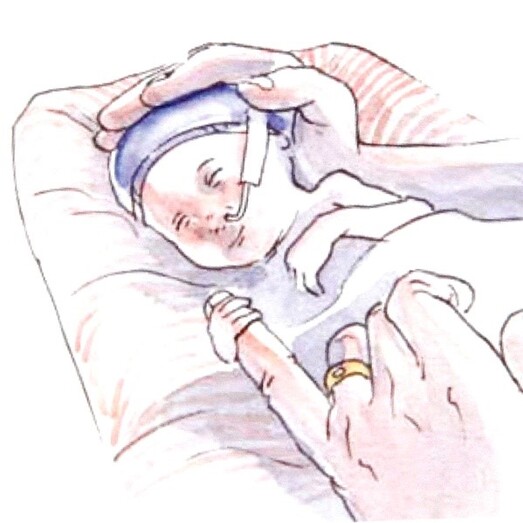
You can help me by...
- To support me under my feet if they suddenly leap into the air.
- To help me get my hands up to my face.
- To give me my pacifier.
- To let me hold your finger.
- To support my head with your hands.
-
No matter how old I am, I can communicate with you in many ways and feel your closeness. While I am very small, I learn to recognise you by being able to grasp your finger, feel your hands envelop my body softly, and by being supported by you during care and treatment. You are the one who can best help me when I need to calm down or fall asleep.
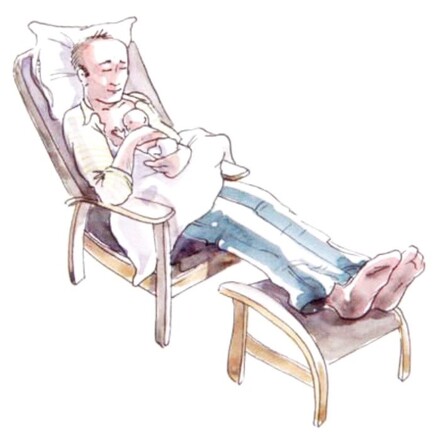
Skin-to-skin contact will help us bond with each other. I like to be in quiet surroundings during such times, so you can also benefit from resting a little at the same time. When you put me in the incubator again, remember to move your hands very gently and calmly. Stay with me until I have fallen asleep peacefully. This way, I can stay calm when we're apart.
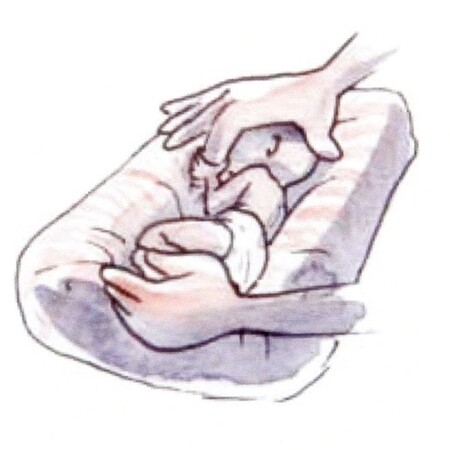
As I grow, I'll be able to see you better, and I'll be able to focus on your face. But it can be a lot of effort for me, so keep in mind that I probably can't handle multiple stimuli, such as a lot of light, noise or speech, while looking at you.
To help me, you can try to keep me in a curled position.
If I look away from you, yawn, or start hiccups, I’m letting you know that it might be too hard for me. I need a rest before I can manage to make eye contact again.
If I have siblings, they can come and visit me providing they are not sick. It's good for me to get to know them and visits will also help my siblings prepare for me to come home.
Close relatives or close friends of my family are also very welcome to visit me. They can also help take care of me if my parents need a rest or have other tasks outside the department.
-
My first bath is an important step in my life. A bath is not a medical procedure, but a special moment we share.
At first, it can be a little uncomfortable to feel wet. I feel more secure wrapped in a muslin cloth and if I can feel the side of the bathtub against my feet. When I feel safe, I can relax better.
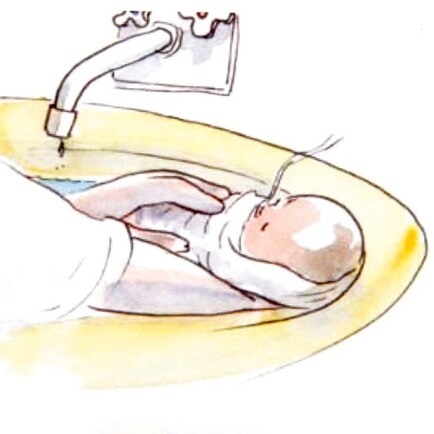
-
Sucking and then digesting my milk is hard work for me. To begin with, I get milk through the tube that goes through my nose and down into my stomach. This is what the nursing staff call tube feeding.
While I eat (get milk through the tube) I like to have my hands near my face. Maybe I'll suck on them, but you can also give me a dummy to suck on. By sucking on my hands or the pacifier while something gets into my stomach, I learn to associate sucking with filling my stomach and feeling full.
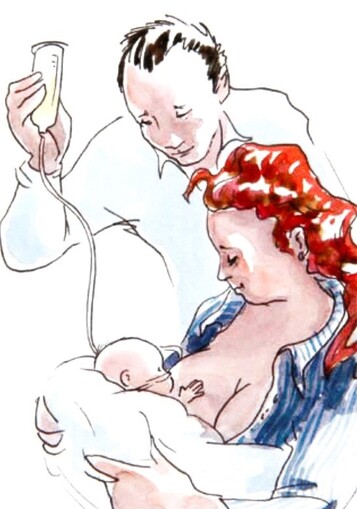
I like to get a few drops of milk in my mouth or on my pacifier. This way I learn that when I suck, something good comes down into my stomach. Even though I can't breastfeed yet, I like to lie by my mother's breast while I get tube feeding. Then I can smell her milk, and as I get bigger, I will start practicing suckling from the breast.
-
If you would like to know more, the nurses who care for me can answer your questions.
Neonatal Units 12 and 13
Tel. 97 66 34 40
The illustrations were drawn by Carl Quist Møller.
Even though there are teddy bears in some of the pictures, for hygienic reasons there must be no soft toys and teddy bears in with the babies in the Neonatal Unit.
This information is based on the English pamphlet "Look at me – I'm talking to you" which is prepared by BLISS – the premature baby charity. "Look at me - I'm talking to you" is made by Dr Nathalie Ratynski, NICU Brest University Hospital, France, in collaboration with Francoise Galland, Sylvie Bleuven, Marie-Therese Kerjean, Odile Meaude, Servane David and Corinne Mahe.


